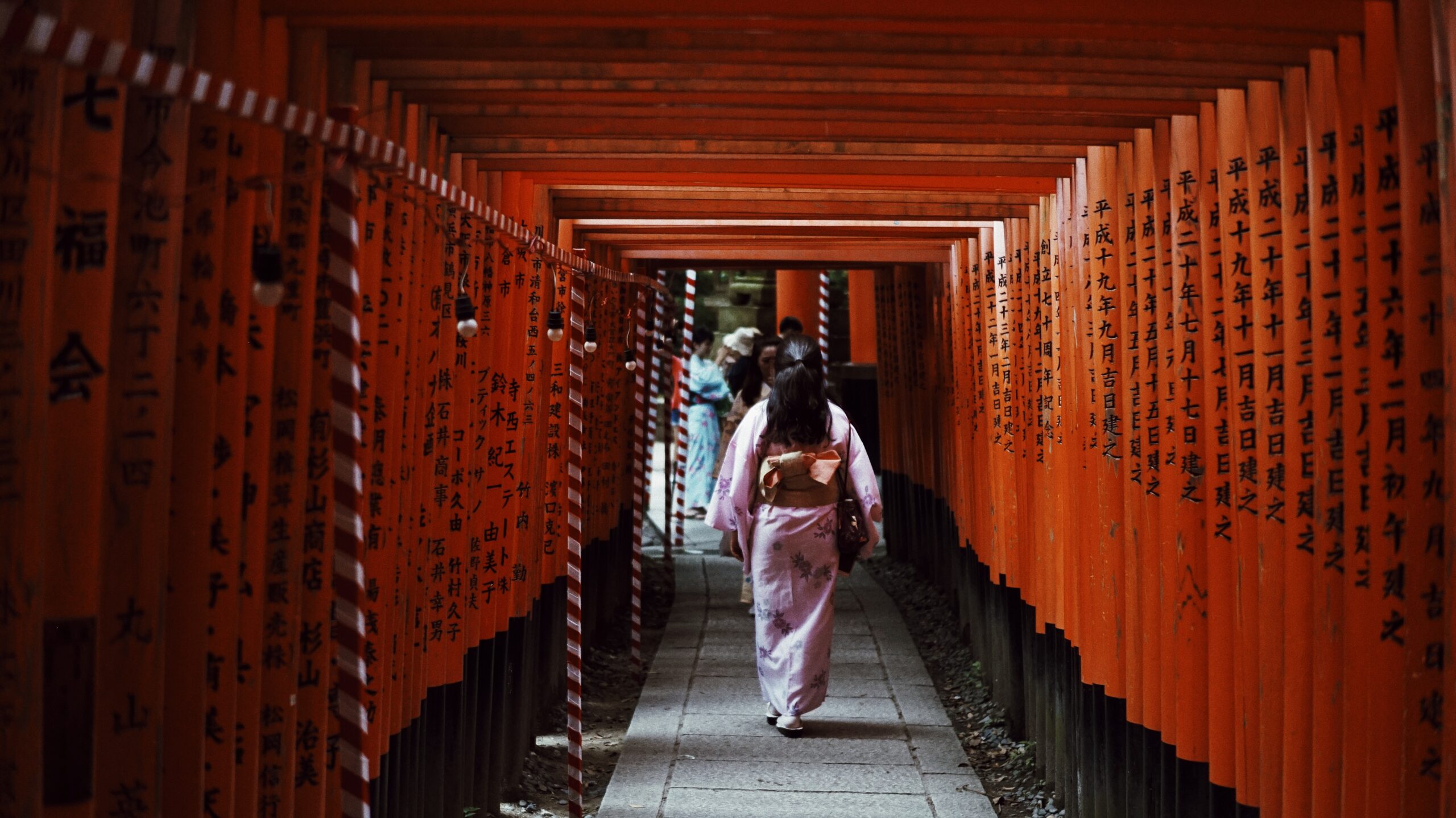Hello dear readers! We all have our personal travel bucket lists, don’t we? Among the many intriguing destinations and thrilling experiences from around the globe, there’s one that deserves special mention. It’s none other than the grandeur of the “Gion Festival Japan” or the Gion Matsuri. The festival’s captivating blend of ancient traditions, culture, and vibrant colors makes it a must-visit spectacle. As we unveil the beauty of this festival together, you’ll learn why your next destination should be Kyoto in July, to become a part of this glorious celebration. So, let’s delve into the enchanting world of Gion Matsuri together.
Historical Significance
The Gion Festival, or Gion Matsuri as it is locally known, is one of the most celebrated festivals in Japan. Dating back to the year 869, the festival has deep historical and cultural roots. But why was this festival initiated? The reason might surprise you!
Originally, the festival was a religious ceremony performed to appease the gods during an epidemic. The ‘Goryoe’ or ‘honorable spirits’ were summoned to stop the plague from taking more lives. This spiritual practice involved a series of events, including the carrying of 66 halberds (one for each province in old Japan) to the Shinsen-en, a garden associated with the Imperial Palace. While this may sound quite far from the festival’s present grandeur, this historical significance holds the key to understanding the relevance and continuity of the Gion Festival.
As the centuries rolled by, the festival expanded, becoming more elaborate and festive. Today, it’s not just a religious ceremony but a grand spectacle that highlights Japan’s rich cultural heritage, making it an experience of a lifetime. By being part of the Gion Festival, you’re not just attending a festivity; you’re becoming a part of a centuries-old tradition, offering you an insight into Japan’s rich history.
The Exuberant Yamaboko Junko Parade
There’s something truly magical about a parade, isn’t there? The anticipation as you wait for the first float to appear, the electricity in the air, the cheers of the crowd – it’s an experience that’s hard to put into words. But the Yamaboko Junko parade at the Gion Festival Japan isn’t just any parade; it’s a spectacular display of craftsmanship, tradition, and community spirit that’s unlike anything else.
The Yamaboko Junko parade is the centerpiece of the festival, featuring 33 grand floats divided into two categories – the ‘Yama’ and ‘Hoko’. These intricately designed floats are feats of craftsmanship and serve as the festival’s main attractions.
One notable aspect is that the floats are built without any nails but instead use an interlocking mechanism – a testament to the skill of the Japanese artisans. Moreover, the floats are adorned with intricate tapestries from places as distant as Persia and China, showcasing the historical trade relationships and Kyoto’s past as a cultural hub.
Imagine being a part of the crowd, watching in awe as these magnificent floats glide past, each one a piece of art in itself, while traditional music fills the air. This kind of immersive, culturally-rich experience is what makes attending the Gion Festival Japan such a unique and valuable journey.
The Enthralling Yoiyama Evenings
Now, let’s take a journey into the enchanting Yoiyama evenings that precede the grand parade. “Yoiyama” are the three nights leading up to the Yamaboko Junko parade. During these nights, the city takes on a festive atmosphere, with the streets illuminated by lanterns and lively sounds of music, chatter, and laughter filling the air.
Imagine walking down Shijo Street as the evening descends, the streets are lit up by a thousand lanterns, and there’s a palpable sense of excitement in the air. The grand floats are displayed for the public, and visitors can take a close look at these marvels of craftsmanship. Some houses, known as ‘Kakegaku,’ even open their private collections of family heirlooms to the public – a rare chance to see some of Kyoto’s hidden treasures.
The Yoiyama evenings are a perfect time for you to interact with locals and other festival-goers, enhancing your understanding and appreciation of this grand tradition. Experiencing the Yoiyama evenings is a perfect example of how attending the Gion Festival Japan isn’t just about witnessing an event; it’s about immersing yourself in the cultural and community life of Kyoto.
The Vibrant Yoiyoiyama and Yoiyama Eve
After the mesmerizing Yoiyama evenings, the city comes alive yet again on the nights of the Yoiyoiyama and Yoiyama. These two nights hold a significance akin to Christmas Eve, where anticipation hangs heavy in the air, and the festival spirit soars high.
In the days of Yoiyoiyama and Yoiyama, the city center of Kyoto turns into a pedestrian paradise. The streets are closed to vehicle traffic, allowing festival-goers to walk freely and enjoy the sight of the gigantic, illuminated floats that line the streets. These floats, rich with symbolism and history, stand tall against the dark canvas of the night, creating a surreal spectacle that would leave you awe-inspired.
During these evenings, you’ll have the chance to explore the traditional downtown area of Kyoto, with its classic wooden machiya houses. These machiya houses often display their family treasures, which typically include ancient scrolls, delicate porcelain, and intricate kimono. This open-house tradition, known as Byobu Matsuri, gives you a unique glimpse into the lifestyle and culture of old Kyoto.
Attending these events gives you a rich, immersive experience. You’re not just witnessing a festival; you’re living it, becoming a part of the local community, and engaging with traditions that have spanned centuries. Such an experience highlights the transformative power of the Gion Festival Japan for its attendees.
Traditional Music and Performances
Can you imagine a grand festival without music and performances? Hardly! And the Gion Festival Japan is no exception. One of the main highlights of the Gion Matsuri is its rich repertoire of traditional music and performances, which add an extra dimension of cultural immersion to the festival.
The music of Gion Matsuri, also known as Gion-bayashi, is a unique element that gives the festival its soul. The rhythm of the gongs, flutes, and drums echo through the city streets, creating an environment that is jubilant, vibrant, and intensely engaging. Every float in the parade has its musicians, adding a unique soundtrack to the visual spectacle.
Aside from the music, traditional Japanese performances are an integral part of the festival. Among these, the Tsujimawashi, the maneuvering of the enormous Hoko floats at intersections, is an exhilarating sight. Watching the local men dressed in traditional happi coats and hachimaki headbands push and pull these two-story high, twenty-five-ton floats using nothing but their bare hands and ropes is a testament to teamwork and community spirit.
Through these performances and the music, you get a sense of the celebratory spirit of the festival, offering you a deeply emotive and immersive experience. The Gion Festival Japan, therefore, stands out not just as a visual feast, but a cultural and auditory journey as well.
Naginata Boko: The First Float
Let’s now turn our attention to the showstopper of the Yamaboko Junko parade, the first and the grandest float, the Naginata Boko. Celebrated for its magnificence and symbolism, this float embodies the very spirit of the Gion Festival Japan.
The Naginata Boko is unique as it carries on its deck a sacred child, known as a “Chigo.” This child, selected from the families of Kyoto, serves as a divine messenger and performs a sacred dance, praying for peace and prosperity. The sight of this child, dressed in Heian-period costume, solemnly performing the dance, is poignant and deeply moving.
The Naginata Boko also holds a Naginata, a long sword that is believed to have the power to cut through and disperse any evil forces in its path. The float is led through the streets by men carrying a halberd, symbolizing the original purpose of the festival – to ward off plague and disease.
Experiencing the grandeur and cultural depth of the Naginata Boko offers a profound understanding of the Gion Matsuri’s history and its place in the hearts of the people. It’s not just about watching a parade pass by; it’s about participating in a tradition-laden with symbolism and shared cultural history.
The Spectacular To-rii Nagashi
After the pomp and ceremony of the Yamaboko Junko parade, the festival does not just fizzle out; instead, it concludes with a ritual as beautiful as it is significant – the To-rii Nagashi.
The To-rii Nagashi or the “Floating of the Shrine Gate,” is a traditional ritual held at the end of the Gion Festival Japan. During this event, a miniature shrine gate or ‘to-rii,’ decorated with gohei (a Shinto symbolic item) is set afloat on the Kamo River to send off the deities and spirits who visited during the festival.
Imagine standing by the river, watching as the tiny to-riis float away, carrying with them the spirit of the festival, marking the end of an extraordinary experience. It’s a sight that is enchanting in its simplicity yet deep in its significance, symbolizing the cyclical nature of life and festivals. The To-rii Nagashi, thus, provides a serene and beautiful conclusion to the festive frenzy of the Gion Matsuri.
The Exquisite Mikoshi Purification Procession
One of the most solemn and important rituals of the Gion Festival Japan is the Mikoshi Purification Procession. This procession symbolizes the very essence of the festival, making it an integral part of the Gion Matsuri experience.
The Mikoshi Purification Procession involves carrying sacred portable shrines, or ‘Mikoshi,’ from Yasaka Shrine to the purification site at the Kamo River. This procession is considered a form of purification, with the river’s pure water believed to cleanse and renew the energy of the divine spirits residing in the Mikoshi.
This event’s tranquil and serene atmosphere is in stark contrast to the lively Yamaboko Junko parade. Imagine standing among the crowd, watching in silence as the Mikoshi are carefully carried past in a solemn procession. It’s a sight that resonates with spiritual significance and offers a deeper understanding of the respect and reverence the people of Kyoto have for their deities and traditions.
The Mikoshi Purification Procession, therefore, offers not just a visual spectacle, but a profound spiritual experience. By witnessing this event, you’re stepping into a sacred space, and sharing in the spiritual practices of the Kyoto community.
The Unique Byobu Matsuri
As you roam the streets of Kyoto during the Gion Festival, you’ll notice something truly unique – the Byobu Matsuri. During the festival, local residents display their precious ‘Byobu,’ or folding screens, along with other family heirlooms. This open-house tradition turns the city into a veritable museum, providing a rare glimpse into the residents’ private collections.
Walking through the historic streets, each home opens up like a treasure chest, revealing beautiful Byobu that are carefully preserved and passed down through generations. Each screen tells a story, often depicting scenes from classical literature or landscapes. The Byobu Matsuri offers a great opportunity to appreciate traditional Japanese art up close.
Imagine this – walking through a city where doors are open, and centuries-old art is just a glance away. It’s an extraordinary experience that allows you to connect with Japanese culture and art at a personal and intimate level.
The Byobu Matsuri, therefore, not just beautifies the city, but also enhances your cultural understanding and appreciation, making the Gion Festival Japan an enriching experience.
The Unforgettable Atmosphere
Last, but certainly not least, one of the most enduring aspects of the Gion Festival Japan is the unforgettable atmosphere. The festive spirit enveloping the city throughout July is an experience unto itself.
Kyoto, known for its numerous temples, shrines, and historical sites, transforms during the Gion Matsuri. The usual tranquility gives way to a lively and joyous ambiance, as locals and tourists alike gather to celebrate one of the biggest events of the year. There’s a sense of shared enjoyment and community spirit that transcends language barriers and cultural differences.
From the thrumming energy of the Yamaboko Junko parade to the serene beauty of the Mikoshi Purification Procession; from the bustling Yoiyama nights to the peaceful floating of to-rii on the river, each event contributes to the festival’s unique atmosphere.
The Gion Festival Japan is more than just a series of events; it’s a mood, a spirit, a collective celebration that stays with you long after the festival is over. You leave with not just memories, but a sense of having participated in a tradition that transcends time.
There you have it, the grandeur and splendor of the Gion Festival Japan. Now, isn’t this an experience worth adding to your bucket list?
It’s not just about visiting a city or seeing a festival; it’s about being part of an event steeped in history, living the culture, and creating unforgettable memories. So, here’s your call to action – immerse yourself in the captivating charm of Kyoto, be a part of the vibrant Gion Matsuri, and enrich your travel repertoire. Trust me; this is an experience you wouldn’t want to miss. Safe travels, dear readers, and see you at the Gion Festival Japan!
We welcome any suggestions or questions. You can email us or contact us using the contact page.
You can also connect with us on the following social networks:









0 Comments